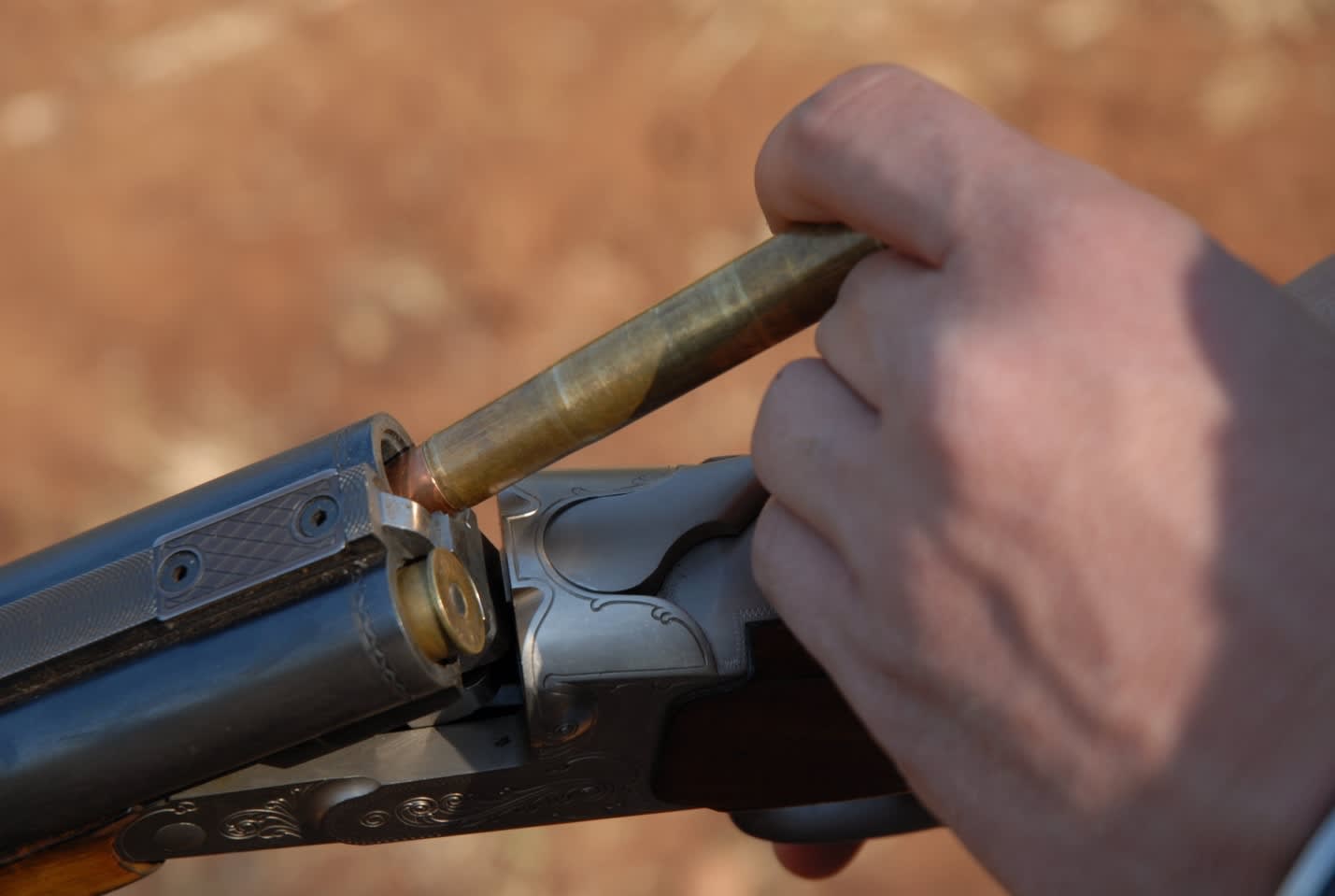The Big Guns of SCI: Wayne van Zwoll and Steve Hornady on “the Heavies”
Hunting with Joe Byers 02.10.14

“Why do you use a .600 Nitro as a backup rifle?” asked the safari novice of his professional hunter. Without pause, the PH responded, “Because they don’t make a .700 Nitro.” When it comes to dangerous game there is no such thing as “too much gun,” and the 2014 Safari Club International (SCI) Convention displayed an array of rifles that dish out stopping power when death is mere steps away.
An extensive portfolio of seminars are part of each SCI Convention. Veteran outdoor writer and firearms expert Wayne van Zwoll spoke to the virtues of “the Heavies” in one such presentation that covered large hunting calibers especially of interest to dangerous game hunters.
“The guns that chamber the largest calibers are all here,” said van Zwoll. “The largest calibers and the most powerful hunting rifles,” he continued. He went on to explain that some of the largest “elephant” cartridges like the 505 Gibbs, and the .500 Jeffery were introduced early in the twentieth century, the latter pushing a 535-grain bullet at about 2,400 fps and the Gibbs a 525-grain a little bit slower.

“In 1958, Weatherby came out with its .460 Magnum which trumped both of them and develops about 8,000 foot pounds of energy,” van Zwoll said. “There have been some specialty cartridges that have challenged it, but really not exceeded its power.” The .600 Nitro Express was introduced back at the turn of the century when black powder was replaced by cordite. The .577 threw a 750-grain bullet at about 2,000 fps and the .600 Nitro Express, introduced about 1900, threw a 900-grain bullet at about 1,900 fps. Those were very powerful rimmed cartridges, “flanged” as the British called them, but were developed for double rifles and not suitable for bolt-action guns. “When magazine rifles took over up to and after World War I, the 505 Gibbs and the .500 Jeffrey came into their own. Both were developed for bolt rifles as was the Weatherby,” van Zwoll said.
Hornady makes bullets and cartridges for many “big guns” and Steve Hornady took time from his booth at this year’s SCI Convention to share his ideas with me. “My father was the founder of the company while today, they mostly keep me in the corner like a giant mushroom,” he said with a wry smile. “Yes, I am the President.”
“Our most popular dangerous game cartridges are the .450, .470, and a .500 Nitro,” shared Hornady. “They make a .570, but we don’t load the cartridges, just make the bullets.”

“The world’s most powerful hunting rifles are often termed ‘elephant guns’ and although most sportsmen will never challenge a huge tusker, they enjoy knowing about them and may want to own one,” Hornady continued. “If you want to own a large dangerous game rifle, you have quite a few cartridge options, and it depends upon your bank account and what you are willing to do. For the vast majority of American hunters, they will want to take a bolt-action rifle. I take a .375 Ruger when I go to Africa; I love that cartridge; I love that gun—it’s fast-handling, easier to use, and gets better performance than a .375 H&H magnum out of a more compact gun. We [Ruger and Hornady] did the same thing for a .416, which is more than adequate for elephant or any dangerous game.”
Other options Hornady spoke to include the .458 Winchester Magnum and the .458 Lott. “The latter is quite a handful and will set you back on your heels every time you pull the trigger. Personally, I don’t want to shoot it,” Hornady said with a laugh.
“Moving into double guns, the one I’ve shot the most is the .450/400 [Nitro Express] and used it for hippo and buffalo,” Hornady told me. “I wouldn’t take a double gun on a buffalo hunt now because I realize how difficult it is to sight for the majority of hunters. The double rifle is the PH gun—that backup gun—and not really one that the normal hunter will use.
“[The hunter will] want a rifle that he can put to his shoulder and get a good sight picture at 100 yards. One hundred yards is a damn tough shot with open sights,” said Hornady. “I’ve made a longer-range shot than that before, not because I’m good, but because I didn’t realize that it was that far away. I thought it was a lot closer and got lucky. Those big guns are the ones when you talk elephant guns: the .450, the .470, and the .500 are right in there.

“Dangerous game ammo has been good for us,” Hornady continued. “Is it economically a super-winner to offer the really big cartridges? Probably not, but it’s something we do because we want to do it. I guess part of what makes us unique as far as this industry is concerned [is that] not everything we do is based on how much money we are going to make from it or any money from it—it’s because we want to. Our customers will appreciate that we make a .450/400 even though they are never going to shoot one. Then Ruger turns around and brings out a single-shot in .450/400 and now you have an affordable rifle that you can go hunt with.”
Next year’s SCI Convention, where you can handle all the “big guns” yourself, will be held in Las Vegas February 4 to 7. Visit www.showsci.org for more information.

